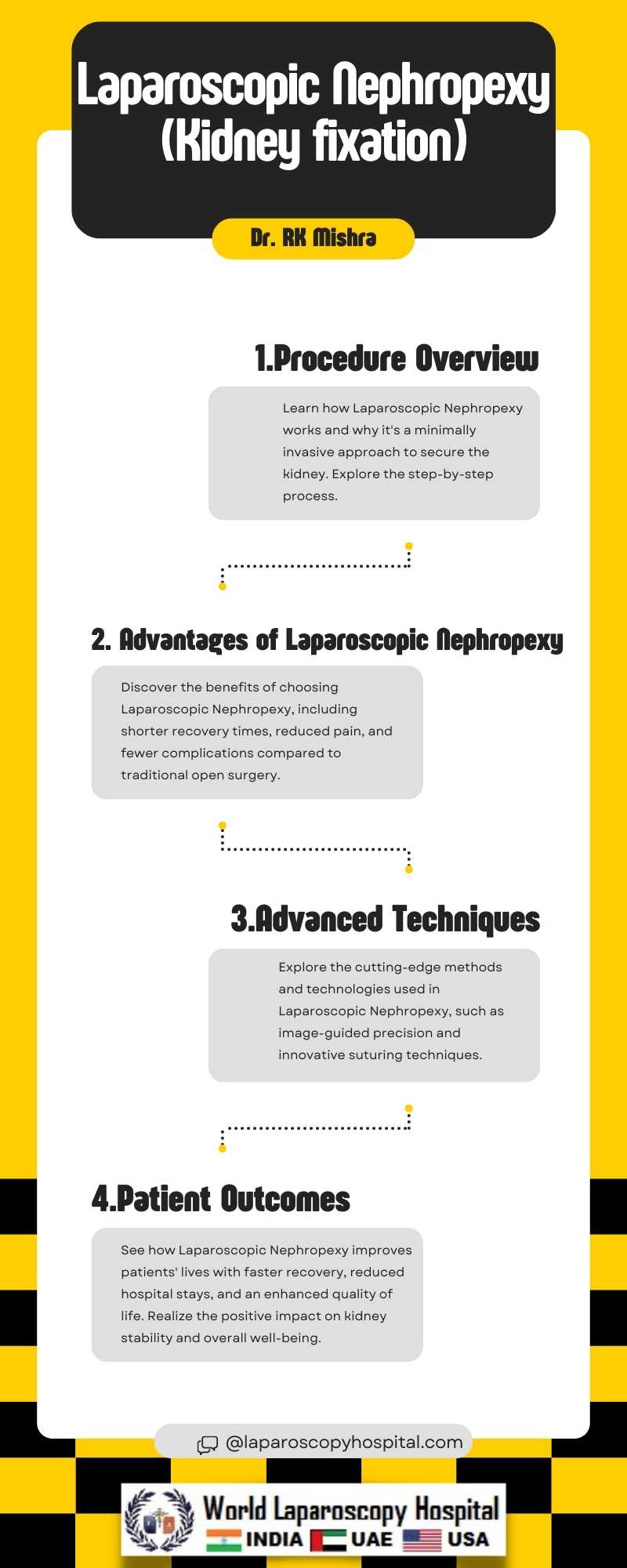Introduction:
In the ever-evolving landscape of medical science, innovations continue to transform the way surgeries are performed. Laparoscopic Nephropexy, a procedure aimed at stabilizing the kidney within the body, has witnessed significant advancements that redefine the realm of kidney stability. This article delves into the latest developments in Laparoscopic Nephropexy, shedding light on how it has redefined the approach to kidney fixation.

The Evolution of Nephropexy
Nephropexy, or kidney fixation, has a long history in the field of surgery. Traditionally, open surgical techniques were employed to anchor a displaced or mobile kidney. However, these procedures often involved large incisions, prolonged hospital stays, and extended recovery periods. With the advent of minimally invasive surgery, the landscape of nephropexy underwent a profound transformation.
The Rise of Laparoscopic Nephropexy
Laparoscopic Nephropexy emerged as a game-changer in the field of kidney stability. This minimally invasive procedure involves making small incisions and using specialized instruments to secure the kidney in its proper position within the body. Compared to open surgery, Laparoscopic Nephropexy offers numerous advantages, including reduced pain, shorter hospital stays, and faster recovery times.
Advancements in Laparoscopic Nephropexy
1. Image-Guided Precision: One of the key advancements in Laparoscopic Nephropexy is the integration of advanced imaging techniques. Surgeons now have access to real-time imaging, such as ultrasound or fluoroscopy, during the procedure. This allows for unparalleled precision in identifying the optimal position for kidney fixation.
2. Innovative Suturing Techniques: The suturing techniques used in Laparoscopic Nephropexy have also evolved. Surgeons can now utilize barbed sutures, which eliminate the need for knot tying and provide secure fixation with reduced operative time.
3. Customized Approaches: Surgeons can tailor Laparoscopic Nephropexy to each patient's unique anatomy. This customization ensures that the kidney is anchored securely and comfortably, minimizing the risk of displacement in the future.
4. Faster Recovery and Reduced Complications: Thanks to the minimally invasive nature of Laparoscopic Nephropexy and these advancements, patients experience faster recovery times and a lower risk of complications compared to traditional open surgery.
5. Outpatient Procedures: In some cases, Laparoscopic Nephropexy can be performed on an outpatient basis, allowing patients to return home on the same day as the surgery. This represents a significant shift away from prolonged hospital stays.
Patient Benefits and Quality of Life
The advancements in Laparoscopic Nephropexy have translated into improved outcomes and a better quality of life for patients. They no longer need to endure lengthy hospitalizations and extended periods of discomfort. Instead, they can return to their normal activities sooner, with reduced pain and a lower risk of kidney mobility.
Conclusion
Laparoscopic Nephropexy has redefined kidney stability in the world of surgery. With advancements in imaging, suturing techniques, customization, and outpatient procedures, patients now benefit from a minimally invasive approach that ensures their kidneys remain securely fixed in the body. These innovations represent a significant step forward in improving patient outcomes and overall quality of life, reinforcing Laparoscopic Nephropexy as a cornerstone of modern surgical practice. As technology and medical knowledge continue to advance, it is likely that even more exciting developments await in the field of kidney stability and laparoscopic surgery.